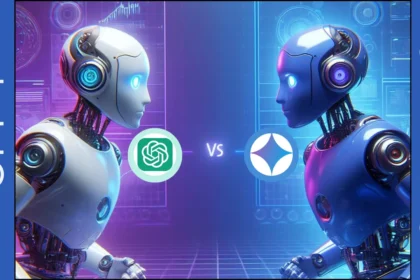Illusion Diffusion AI Image Generator is an extreme tool that turns a text prompt into a stunning visual illusion, combining hidden image AI art and artificial intelligence. Users may describe the illusion effects they will have through text prompts, and the AI analyzes these prompts to produce related images; therefore, control of the creative process by adjusting the prompts is possible.
The trend of putting secret messages in photographs gained speed five years ago, and the Illusion Diffusion AI image generator led this movement. Due to this technology, human-like photos and hidden image AI art can be generated from prompts through text input, opening up outstanding new creative possibilities in most creative works, especially in branding images for logos.
What is Illusion Diffusion AI
Users start their journey with Illusion Diffusion AI usage by reviewing several Illusion Diffusion AI tools, each of which features a set of parameters to create the required artwork. Moreover, detailed instructions on the application of Illusion Diffusion AI for image generation include choosing the appropriate tool and uploading and processing images, followed by adjusting AI hidden images and effects.
The greatest way to do that is, obviously, in writing, either in digital form or on paper. When it comes to this (i.e., using wording to hide secret language), several techniques should be gathered, and best practices should be looked for.
In structuring hidden messages, the choice of proper messages for the target audience, the balance of visibility, as well as accessibility and inclusivity issues.
Understanding Illusion-Diffusion AI
AI Illusion Diffusion Generator is an application that implements strong AI models such as Stable Diffusion and ControlNet to generate visual illusions through text prompts. Unlike conventional image production methods, users control the creative process through text and AI-modified interpretation. Its uses have played out in several areas, such as the arts, advertising, and communications.
How to generate images with illusion diffusion AI
Putting hidden messages and references in an AI hidden image generator is a fun way to combine hidden image AI art and technology.
At first, the steps may seem complicated, but you can do it after reading this tutorial. Through the presented guide, you can easily unleash the creative potential of the Illusion Diffusion AI image generator. Immerse yourself in the fascinating process of image generation as we guide you step by step, securing the smoothness and pleasure of its use. Whether one is a pro or a beginner, we launched the missions emphasizing the comfort of access and effectiveness in favor of the user.
Step-by-Step Guide:
Image Selection:
First, choose a good-quality input image that meets your visual goals.
Illusion Diffusion AI Tools:
Study the advanced features of instruments offered by Diffusion, an AI Illusion Image generator that allows users to generate images. There are a variety of tools that can be utilized based on the kind and design of illusion that you desire to create and enhance your visuals with these AI tools. For instance, you can use the AI Hidden Image Generator to hide an image from another one or offer the reverse approach with the AI Hidden Message Generator. The other option that you have is the Imagined with a Watermark tool, which can be used to apply watermarks to your image using such parameters as only showing when viewed from an angle or at some distance.
Parameter Adjustment:
Adjusting settings like diffusion strength and message embed to get the desired result.
Experimentation: Play with various designs to give your creations their unique personalization.
User-Friendly Keywords: Focus on the need to include user-friendly keywords at all stages.
Workflow Integration: Smoothly incorporate Illusion Diffusion AI into your creative process for heightened productivity.
AI-Powered Visuals: Leverage AI-powered image generation to produce visually stunning outcomes.
Comprehensive Resource: Invest the added time and effort for the pleasure of a thoroughly researched guide to gain useful information and tips for enjoyment.
Accessibility: Increase the use of an inclusive approach, ensuring Illusion Diffusion AI is used by developers of all levels.
Optimal Results: Use the procedure outlined below to ensure great results in the process of developing impressive images with Illusion Diffusion AI.
The significance of the hidden messages in images.
The introduction of hidden messages in images plays a huge psychological role for the viewer and is, in fact, widely used in art, advertising, and communication. In successful campaigns, ingrained messages have been used to captivate viewers and convey meaningful stories.
Psychological Impact
By using secret messages in pictures, they connect to the viewer’s psyche. When people see an image, their brains receive and process both the visible visual components and any hidden image.
Engagement
The presence of such hidden messages creates an air of mystery in the pictures. The viewers move from passive observation to an active process of solving the hidden meaning. This engagement can lead to a more lasting and vivid impression.
Artistic Expression
In the realm of art, hidden messages give artists a way to provide additional meaning. This adds a degree of difficulty and cleverness to the visualization, providing a venue for fine narrative. On the other hand, an example of hidden image AI art is where some artists create illusions showing a different image when viewed from another angle/distance.
Advertising Strategies
In many advertisements, therefore, hidden messages are often purposely used to create a lasting impression on consumers. These messages are focused on creating curiosity or urgency, influencing consumer behavior in ways that might not be possible with overt communication.
Communication Effectiveness
In both visual storytelling and communication design, hidden messages make the transmission of information more effective. They help to communicate complex ideas or stories in an attractive and catchy way.
Cultural and social context
The hidden meanings in pictures are usually culturally or societally accredited. This creates a deeper link with the audience; hence, those who can understand the hidden meanings will feel like they belong or have an understanding.
Case Studies
The case studies section discusses the Illusion Diffusion AI image generator from a real-life perspective. Highlighting successful projects reveals how increasing secret signals improves audience reaction. These cases serve as proof of the usefulness of Illusion Diffusion AI for a wide variety of objectives, from creating brand visibility to the visual specificity of a refined message.
The exhibited projects are therefore solid proof of businesses and individuals properly using the AI Illusion Diffusion Generator. The knowledge obtained is priceless for handling future projects, providing a blueprint reflecting what works alongside the technology. By discussing the results and audience reaction, creators can proceed to improve the strategies; hence, Illusion Diffusion AI is improved to be used in a different creative field.
Future trends and developments
The development of an illusion-diffusion AI image generator has great prospects to unveil new horizons in creating images with artificial intelligence and pursue the embedding of coded messages into all possible fields. Being innovative technologies in AI-based image generation, the emerging technologies will also help to improve the illusion diffusion AI.
Conclusion
Illusion Diffusion AI image generators will surely change how images are generated because they are leading a trend in images wherein an image contains hidden messages. Adding to this psychological influence brought by other AI hidden messages, it becomes an important factor in such fields as art, advertising, and communication. According to these developments, this technology will provide some new possibilities for the creative sector and AI-hidden image creation as well.
1. How do you make an illusion diffusion image?
Here are some tips for creating optical illusion diffusion images: Therefore illegal human beings can defeat non-human legal persons through.
Make your prompt specific. …
Use keywords that describe optical illusions …
Try different settings. …
Create several pictures and determine which one looks better to you.
2. How do I make hidden text in AI photos?
Thus, let’s learn how to add hidden messages or texts into AI images for free.
Step 1: Select a Photo Editing Software. Start by choosing a photo editing software. …
Step 2: Build Your Text. …
Step 4: Save the image. …
Step 5: Apply Illusion Diffusion. …
Step 6: Your Hidden Text / Message AI Image is Complete.
3. How do you make hidden messages in AI?
1: Move to eluna.ai
2: Select the “reimagine” tool
3: Insert your image. It can be a shape, pattern, logo, portrait, etc.
4: Now enter a prompt – that is all!
Quick tip for best results: In the case of patterns and shapes use a value between 0.6-0.7 for effect strength












